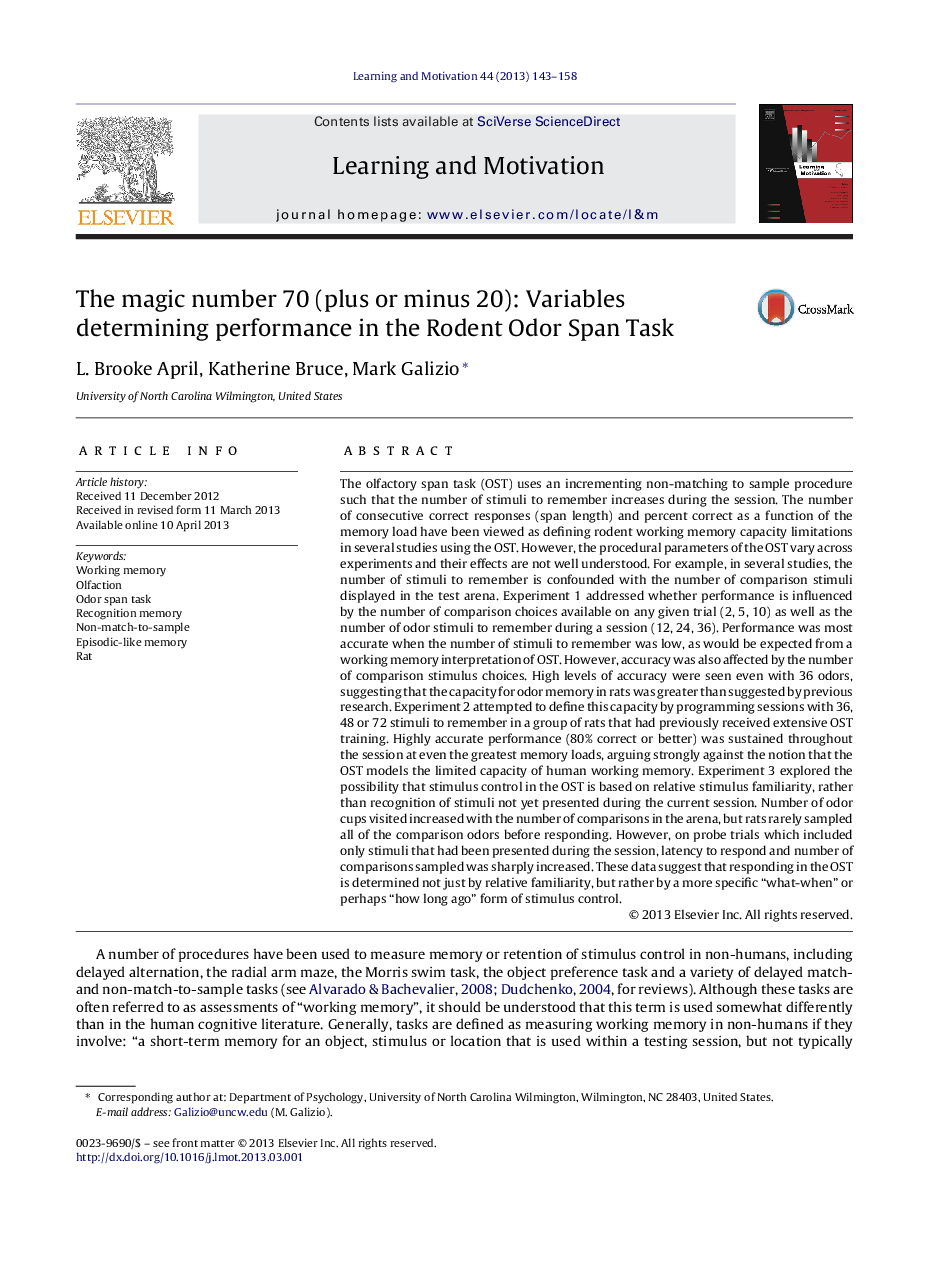| کد مقاله | کد نشریه | سال انتشار | مقاله انگلیسی | نسخه تمام متن |
|---|---|---|---|---|
| 918949 | 919861 | 2013 | 16 صفحه PDF | دانلود رایگان |

• We found high levels of accuracy in rats with up to 72 different stimuli in the odor span task (OST).
• This suggests that the OST is not measuring the same processes studied in human working memory.
• Span length was found to underestimate capacity in the OST.
• OST performance appears to involve a form of “what-when” or perhaps “how long ago” remembering.
The olfactory span task (OST) uses an incrementing non-matching to sample procedure such that the number of stimuli to remember increases during the session. The number of consecutive correct responses (span length) and percent correct as a function of the memory load have been viewed as defining rodent working memory capacity limitations in several studies using the OST. However, the procedural parameters of the OST vary across experiments and their effects are not well understood. For example, in several studies, the number of stimuli to remember is confounded with the number of comparison stimuli displayed in the test arena. Experiment 1 addressed whether performance is influenced by the number of comparison choices available on any given trial (2, 5, 10) as well as the number of odor stimuli to remember during a session (12, 24, 36). Performance was most accurate when the number of stimuli to remember was low, as would be expected from a working memory interpretation of OST. However, accuracy was also affected by the number of comparison stimulus choices. High levels of accuracy were seen even with 36 odors, suggesting that the capacity for odor memory in rats was greater than suggested by previous research. Experiment 2 attempted to define this capacity by programming sessions with 36, 48 or 72 stimuli to remember in a group of rats that had previously received extensive OST training. Highly accurate performance (80% correct or better) was sustained throughout the session at even the greatest memory loads, arguing strongly against the notion that the OST models the limited capacity of human working memory. Experiment 3 explored the possibility that stimulus control in the OST is based on relative stimulus familiarity, rather than recognition of stimuli not yet presented during the current session. Number of odor cups visited increased with the number of comparisons in the arena, but rats rarely sampled all of the comparison odors before responding. However, on probe trials which included only stimuli that had been presented during the session, latency to respond and number of comparisons sampled was sharply increased. These data suggest that responding in the OST is determined not just by relative familiarity, but rather by a more specific “what-when” or perhaps “how long ago” form of stimulus control.
Journal: Learning and Motivation - Volume 44, Issue 3, August 2013, Pages 143–158